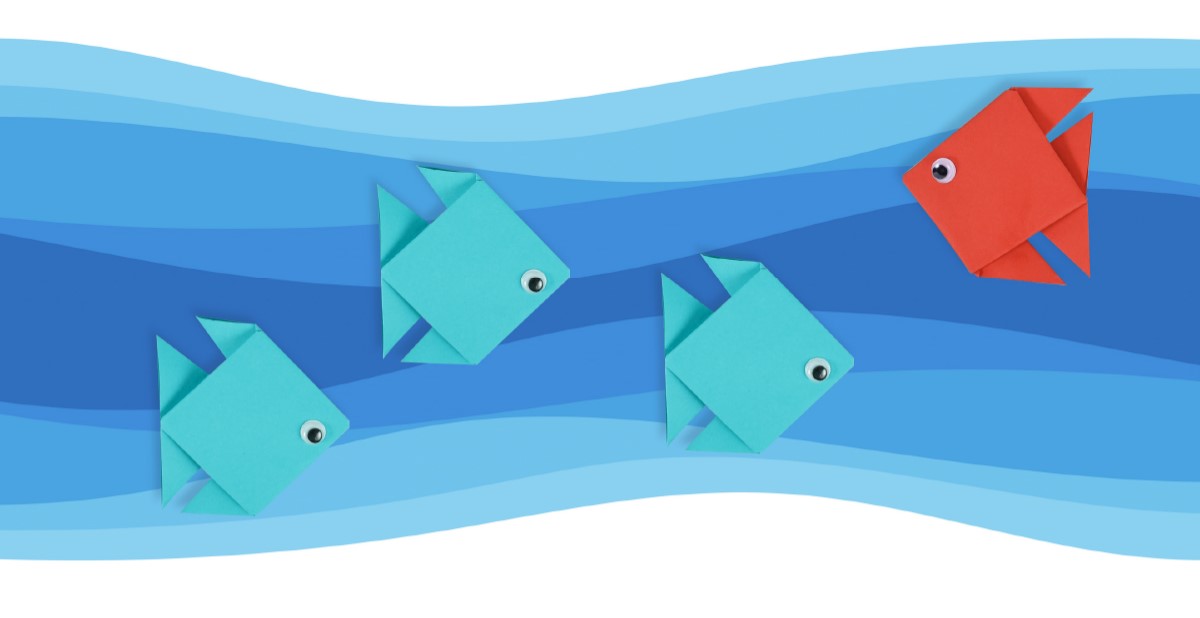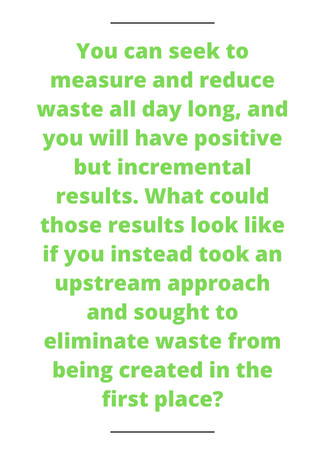Responsibility: Thinking Upstream

Imagine you and a friend are taking a nice walk along a river when suddenly you see a little girl floating through the rapids, calling for help. You both jump in to rescue the child and get her to safety, only to spot another child floating down the river. You save that one. Then you spot two more kids in the river.
Expecting you’ll each take one of the kids drifting through the water, you dive in again, only to turn around and dis-cover your friend is running upstream. You scream at her, “Why are you running away instead of helping!?”
She yells back, “I’m going to tackle the lunatic who’s throwing children in the river!”
This is the parable that opens a great book by Dan Heath, Upstream: The Quest To Solve Problems Before They Happen. According to Heath, humans get stuck in a cycle of response. They focus on addressing problems and putting out fires. People rely on response and reaction because it is easier to see and measure than seeking to identify the root cause of the problem.
The concept of upstream thinking applies to virtually all areas of your professional and personal life, but that type of root cause analysis is particularly relevant to work in sustainability.
You can seek to measure and reduce waste all day long, and you will have positive but incremental results. What could those results look like if you instead took an upstream approach and sought to eliminate waste from being created in the first place?

Our industry tends to get labeled as “brandfill”. We’ve all heard the term. But when I look at waste in the industry, I am confident that, when done right, promo does not fall into this unflattering category.
However, even the best promo contributes to waste through its packaging.
We aren’t alone in that. A few days ago, I received an Amazon delivery. It was a relatively small item packaged in a brown paper shipping bag, inside a larger plastic bag. Why did the paper shipping bag need to be protected from the elements by the plastic bag,? I wondered, while throwing the plastic bag in the trash and the brown paper mailer in the recycling bin. That just took a moment, but my dissatisfaction from the experience has lingered.
Can we focus on elevating the products we sell while simultaneously eliminating the waste associated with the packaging?
The Ellen MacArthur Foundation, a thought leader in sustainability, has produced an Upstream Innovation Guide fo-cused on root-cause solutions to plastic waste. Their focus is on elimination, reuse and material circulation. According to the foundation, the demand for plastic packaging is expected to double over the next 20 years. They argue that only a circular economy approach will help us solve the plastic pollution problem.
According to the Ellen MacArthur Foundation, to create a circular economy for plastic, three actions are required:
- Eliminate all problematic and unnecessary plastic items.
- Innovate to ensure the plastics we do need are reusable, recyclable and ultimately compostable.
- Circulate all the plastic items we use to keep them in the economy and out of the environment.
Put simply, the circular economy is a way of designing, making, and using things that's better for people and the planet. But behind this simple idea, there is a far richer story. Uncover and unpick how the broader idea has evolved here: https://t.co/p82ouLmEG2 pic.twitter.com/VTTUlMyqYp
— Ellen MacArthur Foundation (@circulareconomy) August 2, 2023
I don’t want the recipients of promotional products to have the same experience I had with my Amazon delivery. We must begin to systemically apply upstream thinking to reduce waste while protecting the integrity of the product, the imprint and the end-user experience.
When evaluating packaging, the first question you should ask yourself is, Is it necessary? So often, I see products encased in both a polybag and a cardboard box. Do you really need both?
Certainly, there are some items for which packaging could be eliminated entirely. If the packaging is not necessary but simply expected or customary, what would happen if you got rid of it? Would it still meet customer expectations, or would you need to invest time in changing those expectations? If the packaging is necessary, can you identify recy-clable packaging solutions to replace the plastic packaging?
Or is it possible to create packaging that can be reused by the recipient and potentially even extend the branding opportunity of the product itself? And after that reuse, can we design the packaging to ensure it can be recycled in an infinite loop?
We can do all of those things, as some thoughtful companies are already proving.
I’m not going to pretend this is easy, but I am confident that our industry can apply its inherent creativity and inge-nuity to the problem and stop the lunatic from continuing to throw children in the river.
Stone is the director of member engagement at PPAI.

